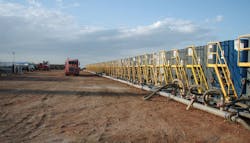Risk of man-made earthquakes now factor in seismic hazard analysis
A few years ago, a 5.6 magnitude earthquake believed to have been caused by injection of waste water from fracking operations into the subsurface struck Oklahoma.
The temblor damaged highways, toppled chimneys, and caused other damage. Last year, there were nearly 900 earthquakes above 3.0 on the Richter scale in the state, and others have been recorded in regions were fracking is underway.
As a result, assessment of seismic risk has changed to include these human-caused earthquakes. Building codes in the area have not been adjusted to take into consideration the increased risk of damage, though.
Developers should consider constructing new buildings with appropriate seismic standards in affected regions, and consider this risk when evaluating their insurance policies.
